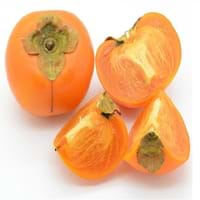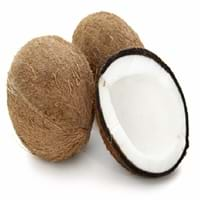Health Benefits
Cancer prevention, Heart care, Heat stroke treatment, Improves eye vision, Weight loss properties
Acidity treatment, Acts as natural antibiotic, Anti-oxidant properties, Aphonia treatment
General Benefits
Anti-inflammatory properties, Boosts immune system, Cures cough, Digestive aid, Fights against infections, Improves blood circulation
Anti-inflammatory properties, Body hydration, Boosts immune system, Controls blood sugar levels, Digestive aid, Fights against infections, Flu treatment, Healing of wounds, Helps in weight loss, Maintains healthy cholesterol level
Skin Benefits
Anti-aging benefits, Brightens and lightens complexion, Reduces wrinkles
Anti-aging benefits, Heals sunburn, Hydrates skin, Reduces wrinkles, Skin rejuvenation, Skin revitalization, Treatment of skin diseases
Hair Benefits
Promotes longer and healthier hair, Protects hair
Promotes longer and healthier hair, Regulates hair growth, Rejuvenates scalp, Shiny hair, Treatment of dandruff
Allergy Symptoms
Abdominal pains, Anaphylaxis, Inflammation
Abdominal pains, Breathing difficulty, Itching in tongue and other parts of mouth, Nasal congestion, Nausea, Runny nose, Vomiting
Side Effects
Diarrhoea, Might affect blood pressure level
Allergic reaction, Indigestion, Weight gain
Best Time to Eat
Along with meal, As a snack in the late afternoon, Don't consume at night and before bed, Morning time (before lunch)
Along with meal, Best if taken as a breakfast (or empty stomach), As a snack in the late afternoon, Morning time (before lunch)
Vitamin B5 (Pantothenic Acid)
Not Available
Vitamin C (Ascorbic Acid)
Vitamin K (Phyllochinone)
Calories in Fresh Fruit with Peel
Not Available
Calories in Fresh Fruit without Peel
Not Available
Calories in Frozen Form
Not Available
Not Available
Calories in Canned Form
Not Available
Type
Berry, Tree fruit
Tree fruit, Tropical
Season
Autumn, Winter
All seasons
Varieties
Fuyu, Jiro, Gosho, Suruga, Hiratanenashi, Hachiya, Aizumishirazu, Yotsumizo, Yokono, Costata, Ormond and Tamopan
Tall Varieties- West Coast Tall, Laccadiv Micro, Andaman Ordinary, Fiji, Kappadam, San Ramon, Philippines, Spicate, and Pratap. Dwarf Varieties- Chowghat Orange Dwarf (COD) and Chowghat Green Dwarf (CGD)
Color
Orange, Red, Yellow
Brown, Green
Inside Color
Orange
White
Taste
Sweet
Juicy, Sweetish
Origin
Burma, China, India, Japan
America, India
Soil Type
Sandy loam, Well-drained
Clay, Sand
Climatic Conditions
Can tolerate wide range of climates
Hot, Humid
Facts about
- Unripe persimmons contain lots of tannin which is used to brew sake & to preserve wood in Japan.
- A small non-edible fruit of persimmon tree is crushed with water, the solution is painted on paper & used to repel mosquitoes.
- Burning coconut's husk helps repel mosquitoes.
- Surveys say that falling coconut kills hundreds every year.
- Coconut water is used as a substitute Blood Plasma & is called "father of modern tissue culture science".
Spirits
Not Available
Yes
Cocktails
Not Available
Yes
Top Producer
China
Indonesia
Other Countries
Azerbaijan, Brazil, Israel, Italy, Japan, Pakistan
Brazil, India, Philippines, Sri Lanka
Top Importer
United States of America
United States of America
Top Exporter
Japan
Philippines
Botanical Name
Diospyros kaki
Cocos nucifera
Synonym
Not Available
Not Available
Subkingdom
Tracheobionta
Tracheobionta
Division
Magnoliophyta
Magnoliophyta
Class
Magnoliopsida
Liliopsida
Subclass
Dillenhidae
Arecidae
Family
Ebenaceae
Arecaceae
Species
D. kaki
C. nucifera
Generic Group
Not Available
Arecaceae
Difference Between Japanese Persimmon and Coconut
We might think that Japanese Persimmon and Coconut are similar with respect to nutritional value and health benefits. But the nutrient content of both fruits is different. Japanese Persimmon and Coconut Facts such as their taste, shape, color, and size are also distinct. The difference between Japanese Persimmon and Coconut is explained here.
The amount of calories in 100 gm of fresh Japanese Persimmon and Coconut with peel is 70.00 kcal and Not Available and the amount of calories without peel is Not Available and 354.00 kcal respectively. Thus, Japanese Persimmon and Coconut belong to and category.These fruits might or might not differ with respect to their scientific classification. The order of Japanese Persimmon and Coconut is Ericales and Arecales respectively. Japanese Persimmon belongs to Ebenaceae family and Coconut belongs to Arecaceae family. Japanese Persimmon belongs to Diospyros genus of D. kaki species and Coconut belongs to Cocos genus of C. nucifera species. Beings plants, both fruits belong to Plantae Kingdom.









